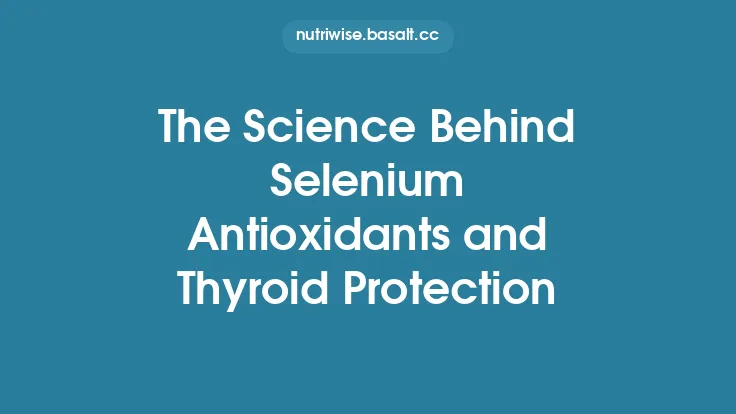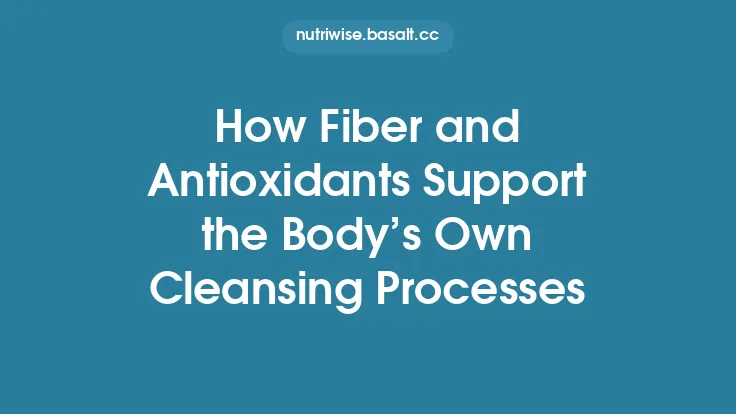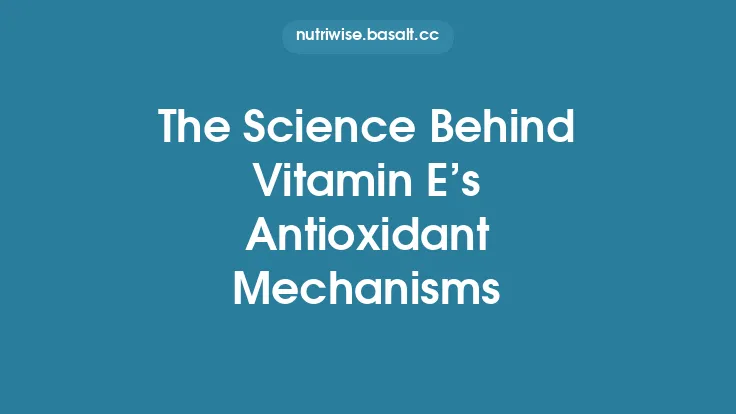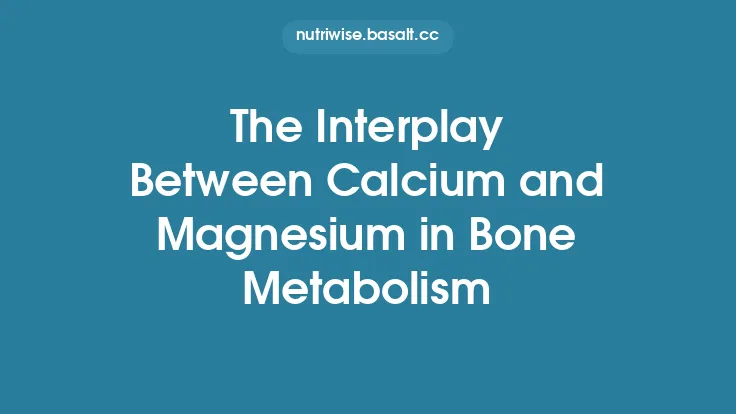Vitamin E, a lipid‑soluble antioxidant, does not work in isolation within the body’s intricate defense network. While its primary role is to protect polyunsaturated fatty acids in cellular membranes from peroxidation, its true potency emerges when it partners with other antioxidants—both water‑soluble and lipid‑soluble—forming a dynamic, regenerative system that sustains cellular redox balance. Understanding how vitamin E interacts with these companions is essential for appreciating its contribution to long‑term health, especially in the context of chronic oxidative stress, aging, and disease prevention.
The Concept of Antioxidant Synergy
Antioxidant synergy refers to the phenomenon where the combined effect of two or more antioxidants exceeds the sum of their individual actions. This is not merely an additive process; rather, antioxidants can recycle each other, stabilize radical intermediates, and modulate signaling pathways that influence the expression of endogenous defense enzymes. Vitamin E’s lipophilic nature positions it at the membrane–aqueous interface, making it a prime candidate for such cooperative interactions.
Key mechanisms underlying synergy include:
- Radical Transfer and Regeneration – An oxidized vitamin E molecule (tocopheroxyl radical) can be reduced back to its active form by a partner antioxidant, restoring its capacity to scavenge further lipid radicals.
- Spatial Complementarity – Water‑soluble antioxidants operate in the cytosol and extracellular fluid, while vitamin E acts within lipid bilayers; together they provide comprehensive coverage across cellular compartments.
- Modulation of Antioxidant Enzyme Systems – Certain antioxidants influence the transcription of genes encoding superoxide dismutase (SOD), catalase, and glutathione peroxidase, indirectly supporting vitamin E’s function.
Vitamin E and Vitamin C: A Classic Redox Pair
One of the most extensively studied interactions is between vitamin E and vitamin C (ascorbic acid). Vitamin C, a potent water‑soluble antioxidant, can donate electrons to the tocopheroxyl radical, converting it back to its reduced, active tocopherol form. This regeneration cycle is crucial because it prevents the accumulation of tocopheroxyl radicals, which could otherwise propagate lipid peroxidation.
Mechanistic Overview
- Lipid Peroxidation Initiation – A reactive oxygen species (ROS) abstracts a hydrogen atom from a polyunsaturated fatty acid, forming a lipid radical (L·).
- Vitamin E Scavenging – Tocopherol (α‑tocopherol) donates a hydrogen atom to L·, yielding a stable lipid hydroperoxide (LOOH) and a tocopheroxyl radical (α‑tocopheroxyl·).
- Vitamin C Regeneration – Ascorbate reduces α‑tocopheroxyl· back to α‑tocopherol, itself becoming dehydroascorbate (DHA). DHA can be recycled to ascorbate via glutathione‑dependent enzymes.
Physiological Implications
- Enhanced Protection of Membrane Lipids – The rapid recycling of vitamin E by vitamin C sustains its antioxidant capacity during periods of heightened oxidative stress, such as intense exercise or inflammation.
- Preservation of Vitamin C – Conversely, vitamin E can protect vitamin C from oxidation by neutralizing lipid‑derived radicals that would otherwise oxidize ascorbate.
Interplay with Carotenoids: β‑Carotene, Lycopene, and Lutein
Carotenoids are a diverse group of lipid‑soluble pigments that reside within cell membranes and lipoproteins, sharing the same hydrophobic environment as vitamin E. Their interaction is multifaceted:
- Co‑Localization in Lipid Domains – Carotenoids and vitamin E can occupy the same membrane microdomains, allowing direct radical quenching and mutual protection.
- Quenching of Singlet Oxygen – Carotenoids efficiently deactivate singlet oxygen (^1O_2), a highly reactive form of oxygen that can oxidize vitamin E. By reducing ^1O_2 levels, carotenoids indirectly preserve vitamin E’s antioxidant pool.
- Regeneration Potential – Certain carotenoids, particularly β‑carotene, have been shown in vitro to donate electrons to the tocopheroxyl radical, albeit less efficiently than vitamin C. This secondary regeneration pathway may become relevant under conditions where vitamin C is limited.
Clinical Relevance
- Synergistic Protection in Photodamaged Skin – While the article on skin protection is outside the scope of this piece, it is worth noting that the combined presence of vitamin E and carotenoids in the epidermis enhances resistance to UV‑induced oxidative damage, a principle that extends to other tissues exposed to oxidative stress.
- Lipoprotein Stability – In plasma, vitamin E and carotenoids are co‑transported within low‑density lipoprotein (LDL) particles. Their cooperative antioxidant action helps prevent LDL oxidation, a key step in atherogenesis.
Glutathione: The Central Cellular Redox Buffer
Glutathione (GSH) is the most abundant intracellular thiol and serves as a primary electron donor for many antioxidant reactions. Its relationship with vitamin E is indirect but pivotal:
- Reduction of Dehydroascorbate – After vitamin C regenerates vitamin E, the resulting dehydroascorbate must be reduced back to ascorbate. This step is catalyzed by dehydroascorbate reductase, an enzyme that uses GSH as a co‑factor. Thus, GSH sustains the vitamin C–vitamin E recycling loop.
- Detoxification of Lipid Peroxides – Glutathione peroxidase (GPx) reduces lipid hydroperoxides (LOOH) to their corresponding alcohols, using GSH as a reducing agent. By removing LOOH, GPx lessens the burden on vitamin E, allowing it to focus on intercepting lipid radicals rather than dealing with accumulated peroxides.
- Maintenance of Redox Homeostasis – The GSH/GSSG (oxidized glutathione) ratio reflects cellular oxidative status. A high GSH level supports the continuous regeneration of both vitamin C and vitamin E, reinforcing the overall antioxidant network.
Interaction with Enzymatic Antioxidant Systems
Beyond small‑molecule partners, vitamin E influences and is influenced by enzymatic antioxidants:
- Superoxide Dismutase (SOD) – By limiting lipid peroxidation, vitamin E reduces the formation of secondary radicals that can inactivate SOD. Conversely, SOD diminishes superoxide levels, decreasing the initiation of lipid oxidation.
- Catalase – Catalase decomposes hydrogen peroxide (H_2O_2), a substrate that can react with lipid radicals to generate more aggressive peroxyl radicals. Vitamin E’s scavenging of lipid radicals reduces the demand on catalase.
- Nrf2 Pathway Activation – Oxidative stress triggers the nuclear factor erythroid 2‑related factor 2 (Nrf2) pathway, upregulating genes encoding antioxidant enzymes. Vitamin E can modulate Nrf2 activation indirectly by altering the cellular redox environment, thereby influencing the expression of its own supporting enzymes.
Factors Modulating Vitamin E Interactions
Several physiological and dietary variables dictate the efficiency of vitamin E’s synergistic actions:
| Factor | Effect on Interaction |
|---|---|
| Age | Declining GSH synthesis and reduced vitamin C absorption in older adults can impair vitamin E regeneration. |
| Nutrient Status | Deficiencies in vitamin C, selenium (co‑factor for GPx), or zinc (co‑factor for SOD) weaken the cooperative network. |
| Lipid Composition | Membrane phospholipid saturation influences vitamin E’s positioning and accessibility to radicals. Highly unsaturated membranes benefit more from synergistic protection. |
| Oxidative Load | Acute stress (e.g., intense exercise) temporarily overwhelms regeneration pathways, highlighting the importance of adequate baseline antioxidant reserves. |
| Genetic Polymorphisms | Variants in genes encoding GST (glutathione‑S‑transferase) or GPx can alter the capacity to recycle vitamin E. |
Practical Implications for Diet and Supplementation
To harness the full protective potential of vitamin E, consider the following evidence‑based strategies:
- Balanced Food Sources – Combine foods rich in vitamin E (e.g., nuts, seeds, vegetable oils) with those high in vitamin C (citrus fruits, berries, peppers) and carotenoids (tomatoes, carrots, leafy greens). This dietary matrix naturally supports regeneration cycles.
- Whole‑Food Supplements – When supplementing, choose formulations that include a spectrum of antioxidants (e.g., mixed‑tocopherol complexes with ascorbate or phytosterols) rather than isolated α‑tocopherol, which can disrupt the balance of antioxidant interactions.
- Timing with Meals – Consuming vitamin E with a modest amount of dietary fat enhances its absorption, while concurrent intake of water‑soluble antioxidants ensures immediate availability for regeneration.
- Monitoring Redox Biomarkers – In clinical or research settings, measuring plasma tocopherol levels alongside ascorbate, GSH, and oxidative stress markers (e.g., F2‑isoprostanes) provides insight into the functional status of the antioxidant network.
- Lifestyle Considerations – Regular moderate exercise, adequate sleep, and stress management reduce chronic oxidative load, allowing the synergistic antioxidant system to operate efficiently.
Research Gaps and Future Directions
While the cooperative nature of vitamin E with other antioxidants is well documented, several areas warrant deeper investigation:
- Quantitative Modeling – Developing kinetic models that integrate the rates of radical formation, antioxidant regeneration, and enzyme activity could predict how dietary patterns influence cellular redox balance.
- Microbiome Influence – Emerging evidence suggests gut microbes can modulate systemic antioxidant status, potentially affecting vitamin E metabolism and its interaction with other antioxidants.
- Targeted Delivery Systems – Nanocarriers that co‑encapsulate vitamin E with complementary antioxidants may improve bioavailability and synergistic efficacy, especially in clinical populations with compromised absorption.
- Genotype‑Specific Recommendations – Personalized nutrition approaches that account for polymorphisms in antioxidant‑related genes could optimize supplementation protocols for maximal synergy.
Concluding Perspective
Vitamin E’s role in cellular protection extends far beyond its isolated capacity to neutralize lipid radicals. Its true strength lies in a sophisticated network of interactions with water‑soluble antioxidants like vitamin C, lipid‑soluble carotenoids, the glutathione system, and a suite of enzymatic defenses. By facilitating radical recycling, stabilizing membrane integrity, and supporting the broader redox landscape, vitamin E acts as a linchpin in the body’s lifelong strategy against oxidative damage.
For individuals seeking to maintain optimal health, the most effective approach is not to focus on a single “magic bullet” but to adopt a holistic dietary pattern that supplies a diverse array of antioxidants. Such a pattern ensures that vitamin E can continuously be regenerated, that lipid peroxidation is kept in check, and that the cellular environment remains resilient in the face of both everyday metabolic stress and acute oxidative challenges.





